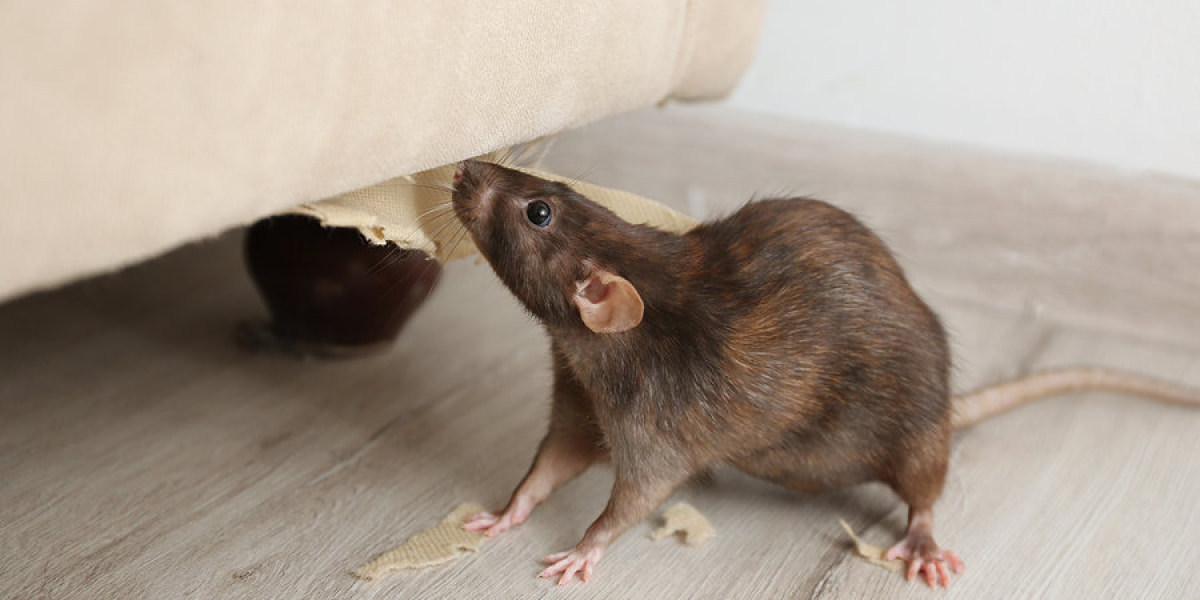Published on November 21st, 2022
Last updated on February 3rd, 2023
Best Humane Ways For Removing Raccoons From Your House
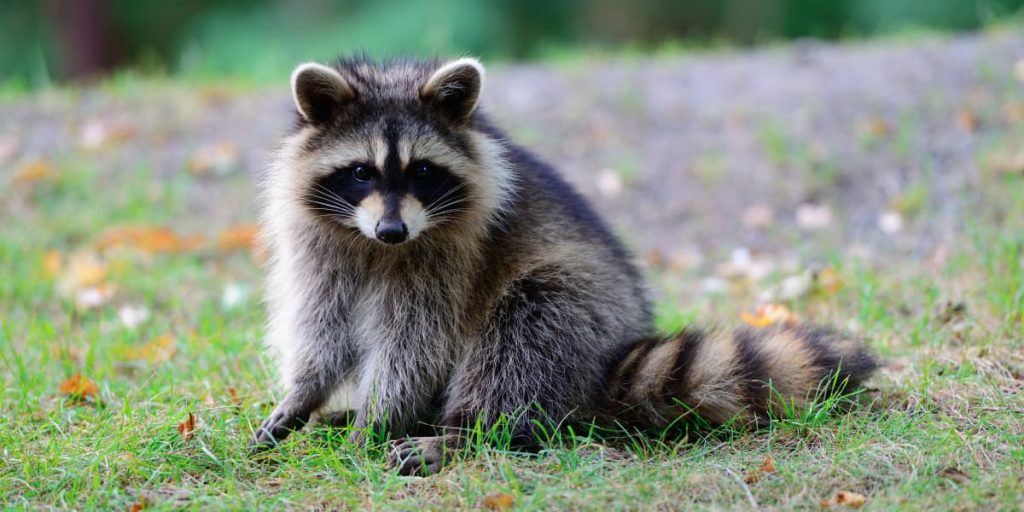
Raccoons are intelligent, curious animals that often look pretty cute. And, of course, you want to hug and squeeze them. And while they may seem cute and harmless, unfortunately, raccoons can cause a lot of damage to your property and pose a health hazard to your family. Raccoons often enter urban residential areas in search of food or shelter. If you have raccoons on your property, there are some of the best humane ways how to get rid of raccoons, but it is essential to take the necessary precautions first.
This blog article will dispel your thoughts that raccoons are defenseless creatures that do not harm. And, of course, we will help you find the most humane way to kick these furry creatures off your property and continue to live peacefully.
So, it is time to remove raccoons if you hear rustling noises at night from different places (attic, basement, trash can, etc.).
Physical Characteristics of Raccoons

Raccoons are nocturnal animals that are primarily active at night. The body of an adult raccoon is covered with grey fur, while the belly and legs are white. They have black mask around their eyes, making them look like bandits. Raccoons have five toes on each foot and sharp claws that they use to climb trees. An adult raccoon weighs about 4-5 kg (9-11 lbs) and is about 60-70 cm (24-28 inches) long, not including the tail.
The life expectancy of a raccoon in the wild is about 2-3 years, but if they live in captivity, they can live up to 20 years.
Raccoons are very curious by nature and have excellent memory. They are also good swimmers and can stay underwater for up to 3 minutes.
Raccoons are known to be very clever animals. For example, they have been known to open doors, latches, and even garbage cans. But as cute as they are, raccoons in attics or basements can be a real irritant.
Habitat of Raccoons
Raccoons are found in North and South America. In the United States, they are primarily located in the eastern states, along the Mississippi River, and some parts of the west. Raccoons prefer to live in wooded areas near streams or other bodies of water where there are trees they can climb. However, raccoons are very adaptable and can live in various environments, such as your house or a garbage can.
Diet of Raccoons
Raccoons are omnivores, which means they eat both plants and animals. Their diet consists of fruits, nuts, insects, eggs, small mammals, and even dead animals. In urban areas, raccoons often rummage through garbage cans looking for food; for example, if people don’t finish eating something and throw it away.
Problems That Raccoons Can Cause
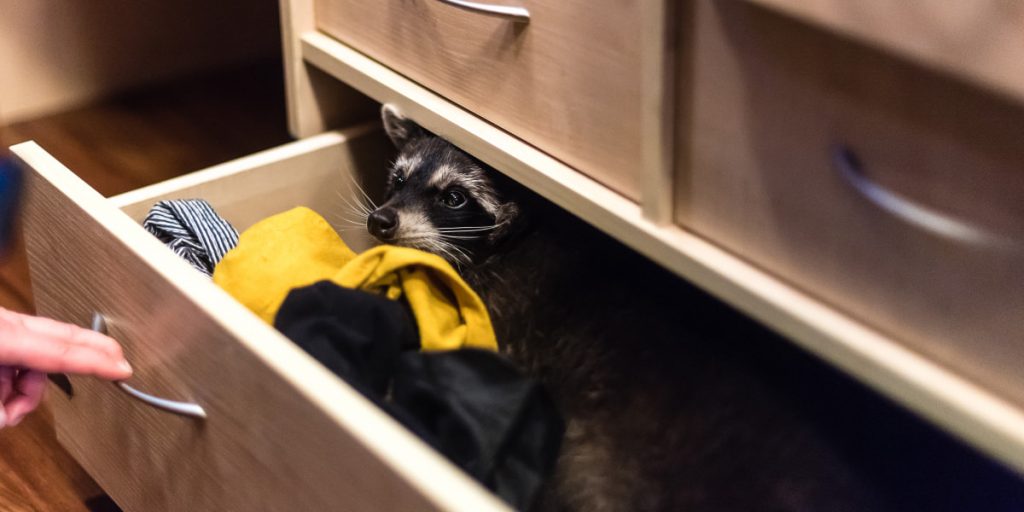
Unfortunately, raccoons are a common sight in many urban and suburban areas. Although they may seem cute and cuddly, as we’ve said before, raccoons can cause a lot of problems once they get into your attic or home:
- Raccoons can damage your property.
For example, they can tear up nets, tear off shingles, and damage vents as they try to enter your home in search of food or shelter.
- Raccoons can be a health hazard to you and your family.
They carry rabies and other diseases that can be transmitted to humans through a bite or contact with their saliva. In addition, raccoons often urinate and defecate near the entrances to their burrows, which can lead to contamination of the area with bacteria that can cause gastrointestinal illness in humans.
- Raccoons can also be a nuisance.
They have been known to make loud noises at night, disrupting sleep. In addition, raccoons often swarm through garbage cans, which can cause a mess.
The best way to get rid of raccoons is to prevent them from entering your home.
Preventing Raccoons in Your Home
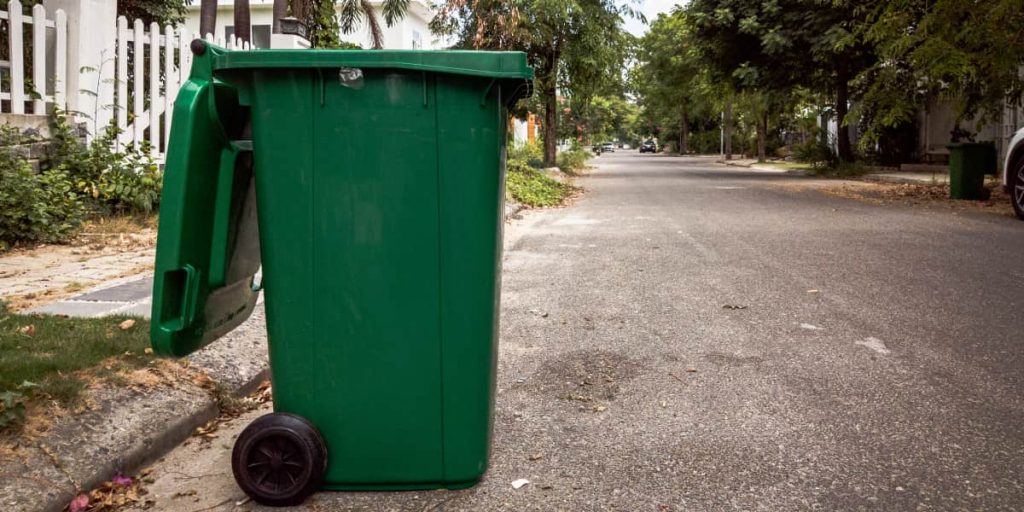
Do you not want to know how to remove raccoons? The best way to do that is to make your home as unattractive to them as possible. Here are some tips:
- Keep garbage cans clean and airtight.
Raccoons are attracted to trash on your property because it is an easy food source. Keep trash cans clean and tightly covered to keep them from going through your trash. Also, wait to put the garbage out overnight; wait until morning. Otherwise, you risk seeing scattered trash and raccoons in the morning.
- Clean up potential hiding places.
Raccoons often build their burrows in tree hollows, so if you have such trees on your property, remove them or at least cover them with something. Also, trimming bushes and trees will help eliminate potential hiding places. If you do this, you will not have to find ways to remove raccoons.
- Eliminate food sources.
As we have said before, raccoons are attracted to places with food. To prevent them from showing up on your property looking for food, keep garbage cans clean and airtight, and remove any potential food sources, such as pet food or bird seed.
Best Ways to Get Rid of Raccoons
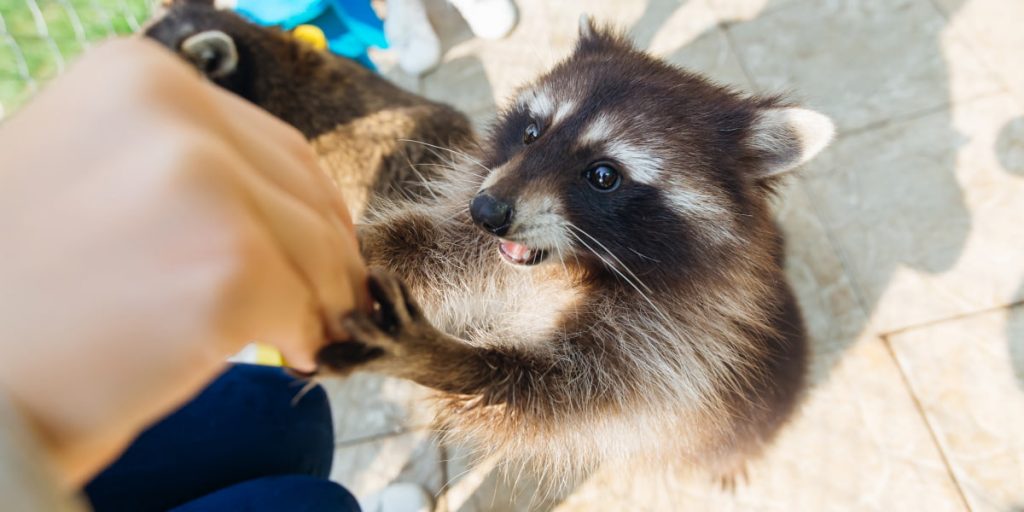
When you decide how to exorcise a raccoon if it has settled in your home, the most important thing is to do it humanely. You want not to harm the animal, and you also want to make sure it doesn’t come back. Therefore, we are primarily in favor of methods that will not endanger the life of the animal.
Below we would like to present methods to help remove raccoons in different areas of your house. Please do not think rashly, but read our instructions in full first, and then decide which method to take.
Also, contact your local Department of Fish and Wildlife to remove raccoons from your home safely. They will give you traps that won’t threaten the raccoon’s life.
Raccoons in the Attic
If you hear strange noises at night from upstairs, it is most likely a raccoon living in the attic. And if a raccoon lives in the attic, it is most likely a female with cubs. Females tear down facade cladding, vents, and more to find a safe place for themselves and their cubs to nest. Here are our tips, step by step, on how to get rid of raccoons in your attic:
- Step 1: Find out if there are kids. Before you do anything, find out if babies are in the nest. You can do this by looking for tracks or listening to the sounds coming from the attic. If you find signs of cubs, wait until they are old enough and independent before taking action. It is usually between May and August. Under no circumstances remove raccoons if there are cubs. They won’t survive.
- Step 2: Wait until evening. Once you realize there are no more baby raccoons in the nest, it’s time to take emergency action. When the raccoon leaves the attic searching for food, you will begin to take action in the evening. Why is it best to do this in the evening or at night? That way, the raccoon won’t see you or feel threatened.
- Step 3: Install a one-way door. A unique door allows the raccoon to get out but not in. You can buy such a door at your local hardware store or make one yourself.
- Step 4: Wait. After installing a one-way door, wait for the raccoon in your attic to disappear. It will take a few days, perhaps even a week or two. Periodically, go up to your attic and check.
- Step 5: Caulk the hole. Once you’re sure the raccoon is gone, it’s time to caulk the gap so it can’t come back.
Raccoons Under the House or Deck
If you think strange noises are coming from under your house, chances are the raccoon has found a passage and has settled there. Raccoons often build their burrows in such places because they are safe from predators. But even though it is safe there, the raccoon can be a nuisance to you. And the only thing you have to do is to remove the raccoon from there. We have prepared the best way to get rid of raccoons:
- Step 1: Find where the raccoon is hiding. Go around your house. Think about where there are potential animal entrances. If you find an entry, look for tracks or other signs that a raccoon has been there.
- Step 2: Use live traps. Remember that they should be as safe as possible for the animal, so they don’t hurt it. Getting traps from your local Department of Fish and Wildlife is best to keep the animal safe.
- Step 3: Place the trap next to the hole through which the raccoon enters and exits. Removing the raccoon this way will be ideal because the animal won’t be able to outsmart you and bypass the trap.
- Step 4: Wait until morning. Raccoons are more nocturnal animals and will come out at night to look for something to eat. In the morning, check the traps to see if you’ve caught anything. If so, release the raccoon in a place far away from your house.
- Step 5: Block the hole. When you’re sure the raccoon is gone, block the hole with rocks or something else so it can’t come back.
Here’s how to humanely get rid of a raccoon under your house or deck.
Raccoons in Your Yard or Garden
Imagine raccoons can settle not only in your house but also in your garden. If you have raccoons in your yard or garden, they are probably looking for food to feast on at night.
The best way to get rid of raccoons is to remove anything that attracts them. If you have a lot of food, such as fallen fruit from trees or trash left behind, the raccoon will keep coming back. To prevent this from happening, here are a few tips:
- Step 1: Remove anything that might attract a raccoon. It includes fallen fruit, trash, pet food, and bird seed.
- Step 2: Keep your trash can lid closed. If your lid doesn’t close tightly, put a heavy rock on top so the raccoon can’t open it.
- Step 3: Clean up after your pets. If you have a pet, clean up after their food and feces, so the raccoon has nothing to eat. Yes, a raccoon can even eat excrement.
- Step 4: Wait for the raccoon to leave. Once you remove anything that might attract a raccoon, it will go because it won’t have anything else to eat.
Raccoons on the Roof
Raccoons like to live in attics, but sometimes they make their home on the roof. It could also be a raccoon if you hear noises on the top. If you have a raccoon living on your roof, here are some tips for removing it:
- Step 1: Find where the raccoon is hiding. The best way to do this is to go outside at night and look for the animal. Use a stepladder. You can also look for tracks or other signs that the raccoon has been there.
- Step 2: Use a live trap. It is best to purchase traps from your local Department of Fish and Wildlife to keep the animal safe.
- Step 3: Place the trap near where you assume the raccoon enters and exits.
- Step 4: Wait until morning. Raccoons are more nocturnal animals and will come out at night to look for something to eat. In the morning, check the traps to see if you’ve caught anything. If so, release the raccoon in a place far away from your house.
- Step 5: Block the entrance. For example, remove the ladder, and trim the trees the raccoon can climb. When you’re sure the raccoon is gone, don’t get any more raccoons.
Raccoons at the Bird Feeder
Do you see a raccoon sitting in your bird feeder? It is probably chewing the food you put in the bird feeder. If you have raccoons in your bird feeder, the best thing to do is to remove the feeder altogether. The best way to get rid of raccoons in the bird feeder is as follows:
- Step 1: Remove the bird feeder. If you have a raccoon in your bird feeder, the best thing to do is to remove the feeder altogether.
- Step 2: Wait for the raccoon to go away. Once you remove the feeder, the raccoon will leave because there will be nothing to eat.
Raccoons in Your Chicken Coop
If a raccoon has appeared in your coop, it’s probably also looking for food, just like a bird feeder. To remove a raccoon in your coop, follow these steps:
- Step 1: Remove anything that might attract a raccoon. It includes trash, pet food, and bird seed.
- Step 2: Keep your coop clean. The raccoon will return if you have a lot of food or feces.
- Step 3: Wait for the raccoon to leave. Once you clean up anything that might attract a raccoon, it will go because it will have nothing else to feed on.
Raccoons in a Tree
If you have a raccoon in your tree, it’s probably because the animal is looking for food or a place for the raccoon to settle. The best way to remove a raccoon from your tree is to remove anything that might attract the animal, such as fruit or trash. Once you do this, the raccoon will go away. Here are some tips:
- Step 1: Use a live trap. Get one from the department, of course.
- Step 2: Place the trap at the base of the tree.
- Step 3: Wait until morning. In the morning, check the traps to see if you’ve caught a raccoon. Raccoons are more nocturnal animals and will go down at night in search of something tasty for their stomachs.
- Step 4: To prevent raccoons in the trees, be sure to pick fruit from the trees.
So, if there is a raccoon in your house, there are ways to remove it. And now you know precisely that. But the best way is to prevent them from showing up.
The best way to get rid of raccoons is to remove anything that might attract them. It includes food, trash, and pet food. Once you do this, the raccoon will disappear because there will be nothing else to feed on.
FAQ
How to get rid of raccoons?
There are a few ways you can get rid of raccoons. One way is to use a live trap and release the animal in a place far away from your house. Another way is to block the entrance that the raccoon is using to get into your home. Finally, you can also remove anything that might attract raccoons.
How to keep raccoons away?
The best way to keep raccoons away is to remove anything that might attract them. It includes food, trash, and pet food. Once you do this, the raccoon will disappear because there will be nothing else to feed on. Additionally, you can also block the entrance that the raccoon is using to get into your house.
How dangerous are raccoons?
Raccoons can be dangerous because they can carry diseases. They can also be a nuisance if they enter your home and start tearing up things. If you have a raccoon in your house, the best thing to do is to remove the animal as soon as possible.
Can raccoons bite?
Yes, raccoons can bite. Additionally, they can also scratch with their sharp claws. If you are bitten or scratched by a raccoon, it is best to see a doctor as soon as possible.
What is the extent of the disaster after the raccoons arrive in the house?
Raccoons can be a nuisance if they enter your home and start to tear up things. Additionally, they can also carry diseases. If you have a raccoon in your house, the best thing to do is to remove the animal as soon as possible.


